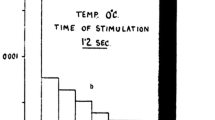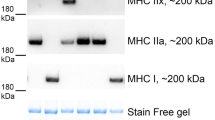Abstract.
A review of the literature suggests that the effects of nitric oxide (NO) on skeletal muscles fibers can be classified in two groups. In the first, the effects of NO are direct, due to nitrosation or metal nitrosylation of target proteins: depression of isometric force, shortening velocity of loaded or unloaded contractions, glycolysis and mitochondrial respiration. The effect on calcium release channels varies, being inhibitory at low and stimulatory at high NO concentrations. The general consequence of the direct effects of NO is to ‘brake’ the contraction and its associated metabolism. In the second group, the effects of NO are mediated by cGMP: increase of the shortening velocity of loaded or unloaded contractions, maximal mechanical power, initial rate of force development, frequency of tetanic fusion, glucose uptake, glycolysis and mitochondrial respiration; decreases of half relaxation time of tetanus and twitch, twitch time-to-peak, force maintained during unfused tetanus and of stimulus-associated calcium release. There is negligible effect on maximal force of isometric twitch and tetanus. The general consequence of cGMP-mediated effects of NO is to improve mechanical and metabolic muscle power, similar to a transformation of slow-twitch to fast-twitch muscle, an effect that we may summarize as a ‘slow-to-fast’ shift.
Similar content being viewed by others
Author information
Authors and Affiliations
Rights and permissions
About this article
Cite this article
Maréchal, G., Gailly, P. Effects of nitric oxide on the contraction of skeletal muscle. CMLS, Cell. Mol. Life Sci. 55, 1088–1102 (1999). https://doi.org/10.1007/s000180050359
Issue Date:
DOI: https://doi.org/10.1007/s000180050359




